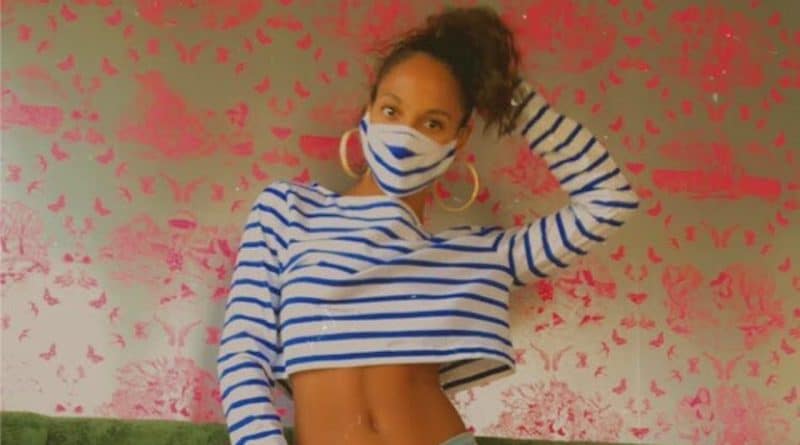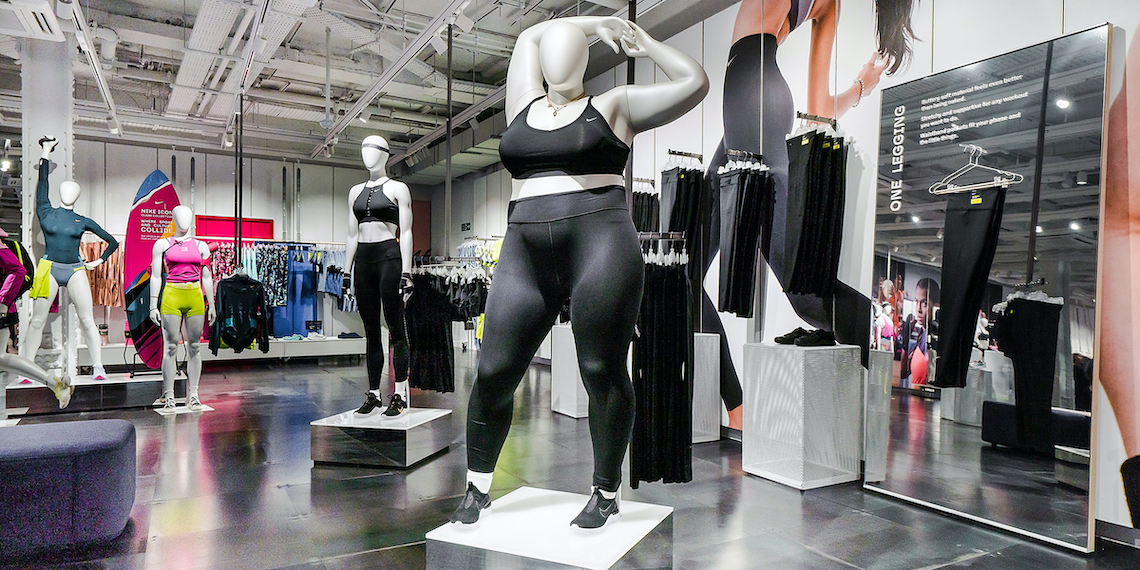Fashion warms up to face masks as a new product category – Glossy
At the beginning of the pandemic, Molly Howard, founder of La Ligne, decided to do what she could to help by asking her team to make 100 face masks and offering customers an option to receive one for free with their e-commerce orders.
The masks proved to be exceptionally popular, running out within a day. In the next iteration, La Ligne started selling a T-shirt-and-mask bundle, all 1,000 of which sold out in a day, as well. Now, the brand is planning to sell masks individually, driven by the high demand from customers. Along the way, the masks have become more thoughtfully designed, the product imagery has gotten slicker, and Howard and her team have started designing non-mask pieces with masks in mind.
La Ligne is one of many brands that has realized face masks’ potential. Never before has an entirely new category of apparel become, practically overnight, an essential part of nearly everyone’s daily wardrobe, Howard said. What began as a medical necessity is slowly morphing into a new accessory, subject to all the same design and marketing considerations as handbags and jewelry. Brands’ approach to making and selling those products has evolved with it.
The creation of a new category of accessories is helpful for the brands that sell them because with masks, like with many accessories, profit margins are extremely high. From 2012 to 2017, more than 60% of Gucci’s revenue came from accessories. A mask is often little more than a scrap of fabric with two elastic bands, and even ones with elaborate filtration systems can be made quite cheaply.
French textile company Chargeurs began making medical-grade masks for governments as far back as January. Those masks were sold either in wholesale retail locations as an essential item or directly to hospitals and other medical facilities. But this week, Chargeurs launched a DTC e-commerce site dedicated to face masks, under a new, U.S. consumer-facing division named Lainiere Health & Wellness. But these masks aren’t disposable, medical-grade masks. They are fashionable items made from materials like silk and lace or covered in sequins. The masks sell for around $20.
Angela Chan, managing director and global president at Chargeurs, said the masks went through several iterations and price changes as they were developed, especially around what type of elastic to use for the straps and what the price should be. She said the actual cost of making masks is low, but polypropylene, which is used in the filtration system, became expensive as demand grew in the last few months, rising by as much as 1,000% in her estimation.
“I have 1,200 employees that I need to make sure keep their jobs,” Chan said. “And with the apparel business down 40%, we’re really fortunate that we can pivot to this business. And I think it’s good to have these sort of more fashionable, reusable masks so we can leave the disposable, medical masks to medical workers who need them.”
Howard said that, at La Ligne, the first batch of masks were made by hand using a pattern downloaded off the internet. For later batches, the team wanted to be more deliberate about how the masks were designed, matching them to prints in the upcoming collection and creating higher-quality imagery to go on the brand’s online store.
“I think this is going to be a thing for a while,” Howard said. “It’s started influencing how we design everything. When I’m making clothes now, I have to think, ‘What will this look like with a mask?’ And the masks have to be neutral, like a handbag, so they can work with anything.”
Data suggests both that masks are here to stay and that fashion is an important consideration for customers buying masks. A survey from Hanes found that 93% of Americans who own a mask plan to keep wearing one for at least the next five months and that the majority — 27% — choose a mask based on its look and fabric more than anything else.
Alice Nam, founder of the newly launched mask brand Nam & Ko, was able to get her company off the ground from the initial idea in April to launch in July, thanks to the high demand for masks. In the early days, she spent hundreds of dollars on masks from every brand that was selling them, looking to see what they did right and what they did wrong. She said one of the toughest things to nail is the materials, especially the elastic.
“I saw a lot of brands not doing the elastic well,” Nam said. “Cheap elastic is common, but it’s not very comfortable. Some brands have used flat elastic, which is a bit more expensive. The best thing for the best fit would be an adjustable strap, which is what we have. It has to be something comfortable that you can wear all day. People are experimenting with neoprene and other materials. There’s a lot of improvement and innovation that can still be done.”
Nam & Ko’s masks range from $18.50-$38.50 and come in a variety of waterproof fabrics, all sold DTC through the brand’s online store.
“We’re not really thinking of them as a revenue-driver for us right now, so we haven’t priced them high,” Howard said. The T-shirt and mask combo is priced at $125, while individual tees are $95-$115. “But imagine if you sold them for a lot, the profit margins would be insane. Masks are not expensive to make.”
Some brands and retailers balk at the idea of charging too much for them. Every brand spoken to for this story said they consciously priced their masks on the lower end to avoid the implication that they are attempting to profit off a pandemic. Major luxury retailers like Farfetch have also banned the sale of expensive face masks for the same reason.
“We’re trying to be sensitive,” Chan said. “We don’t want to overcharge since it’s something everyone needs, and it should be accessible to everyone. At the same time, this is a business, and for the fashion masks for people who want something a little more fun, we can price them more reasonably.”





